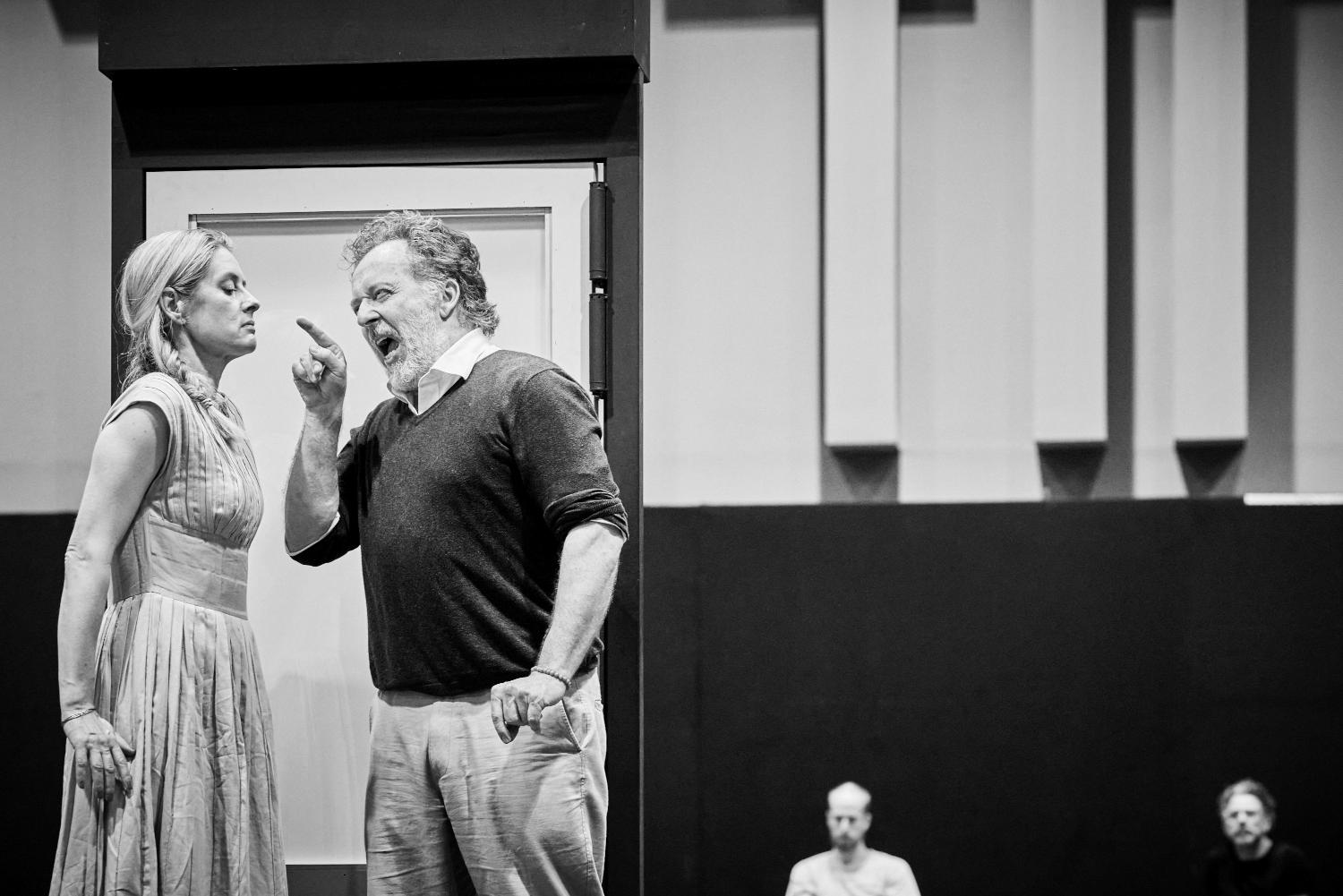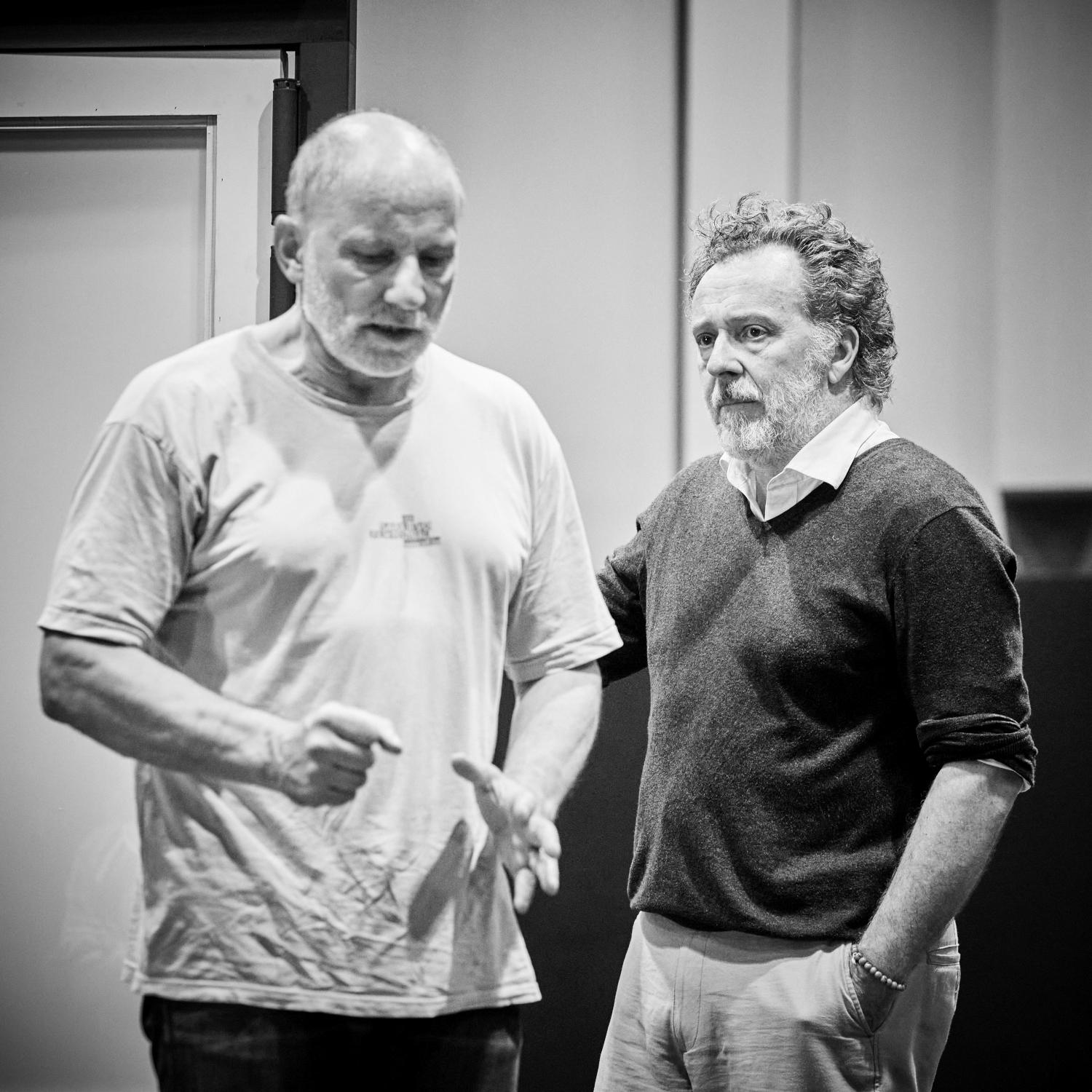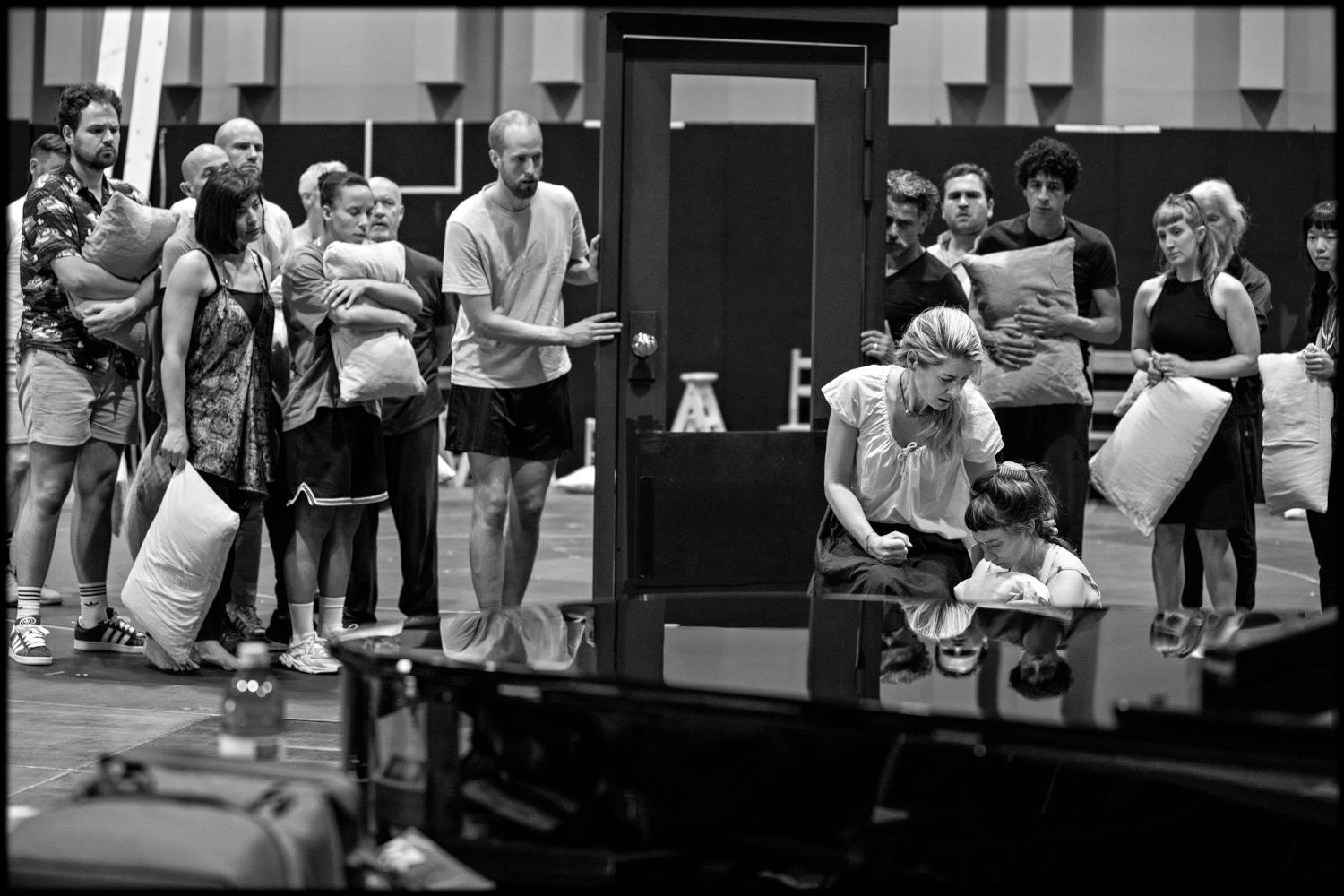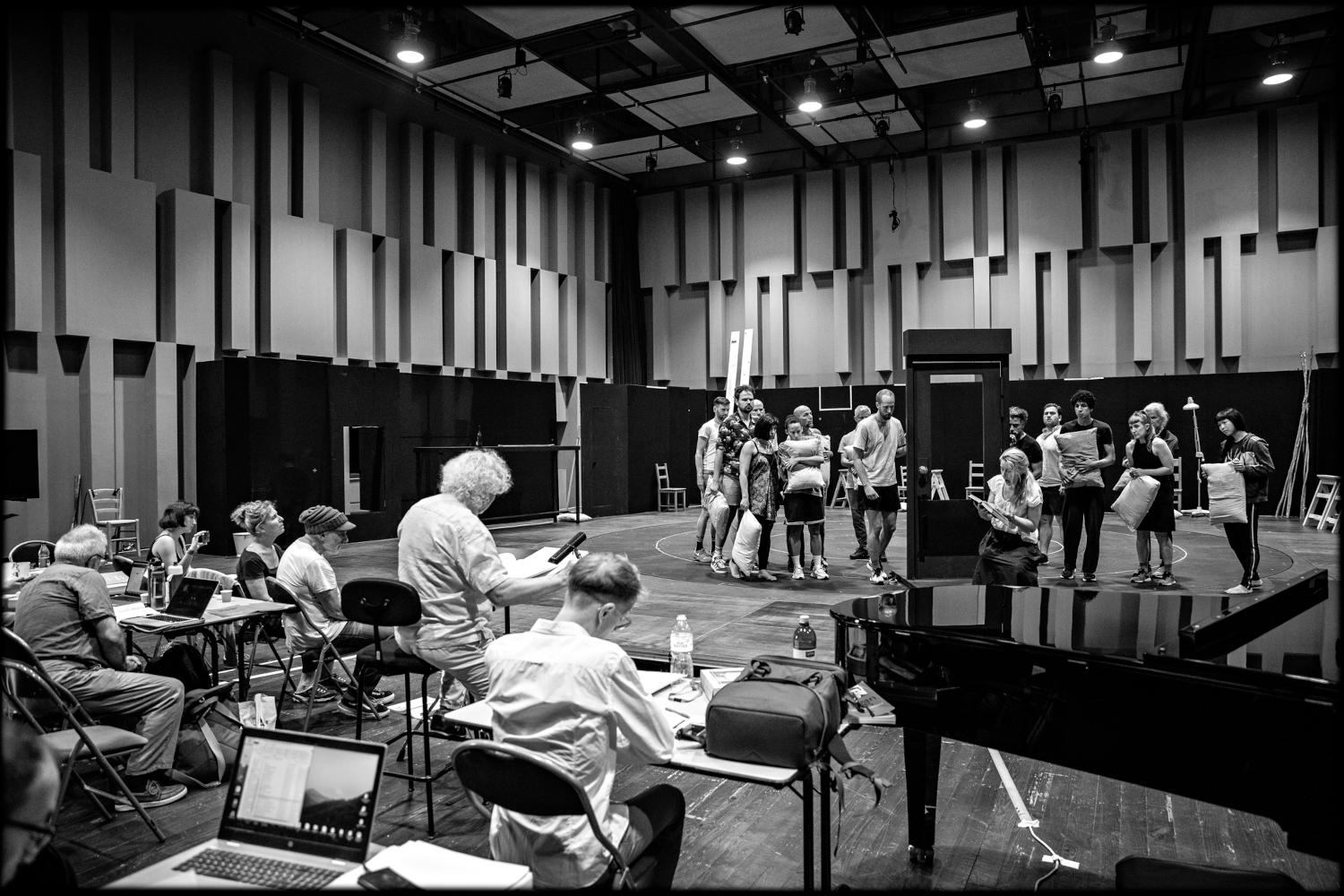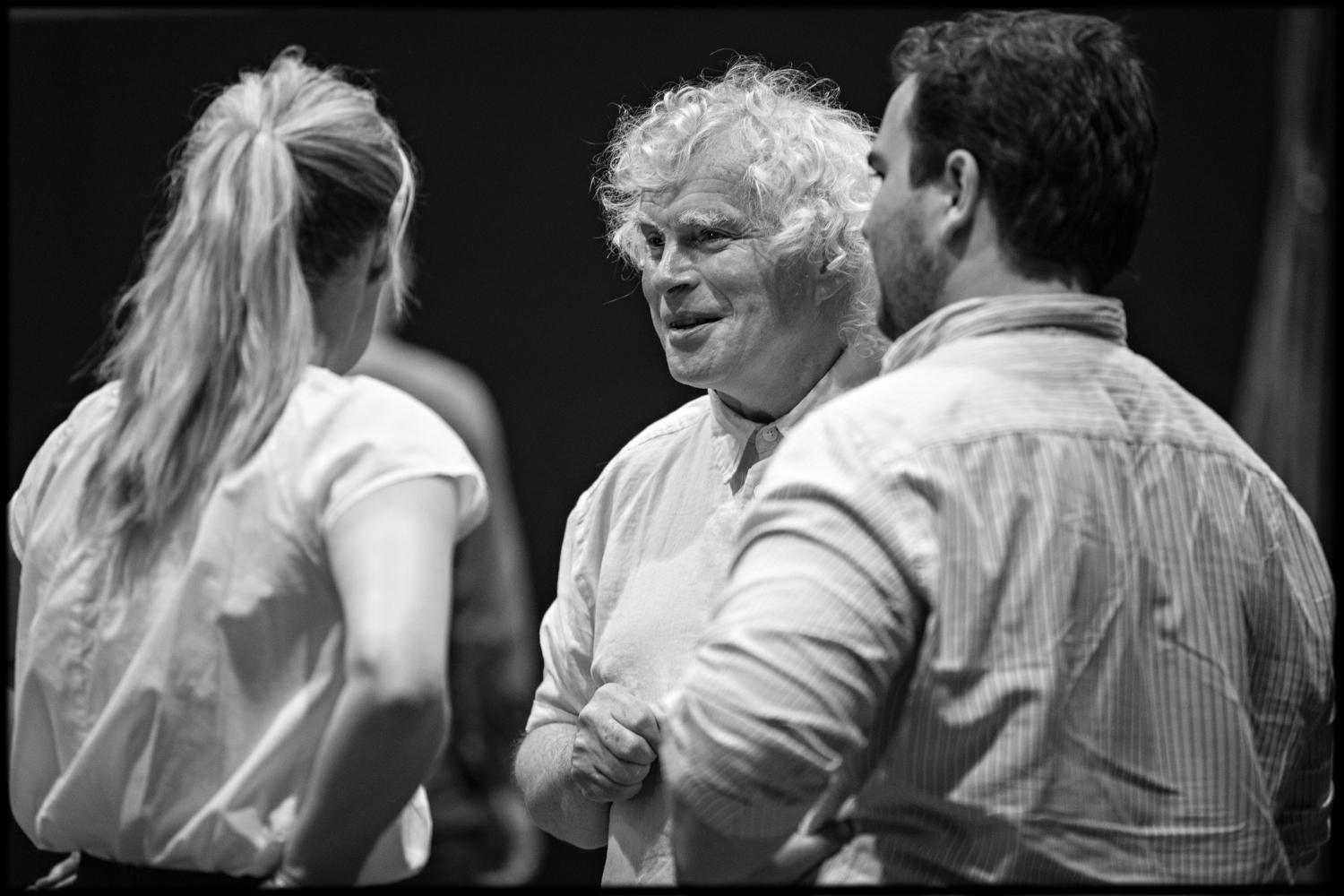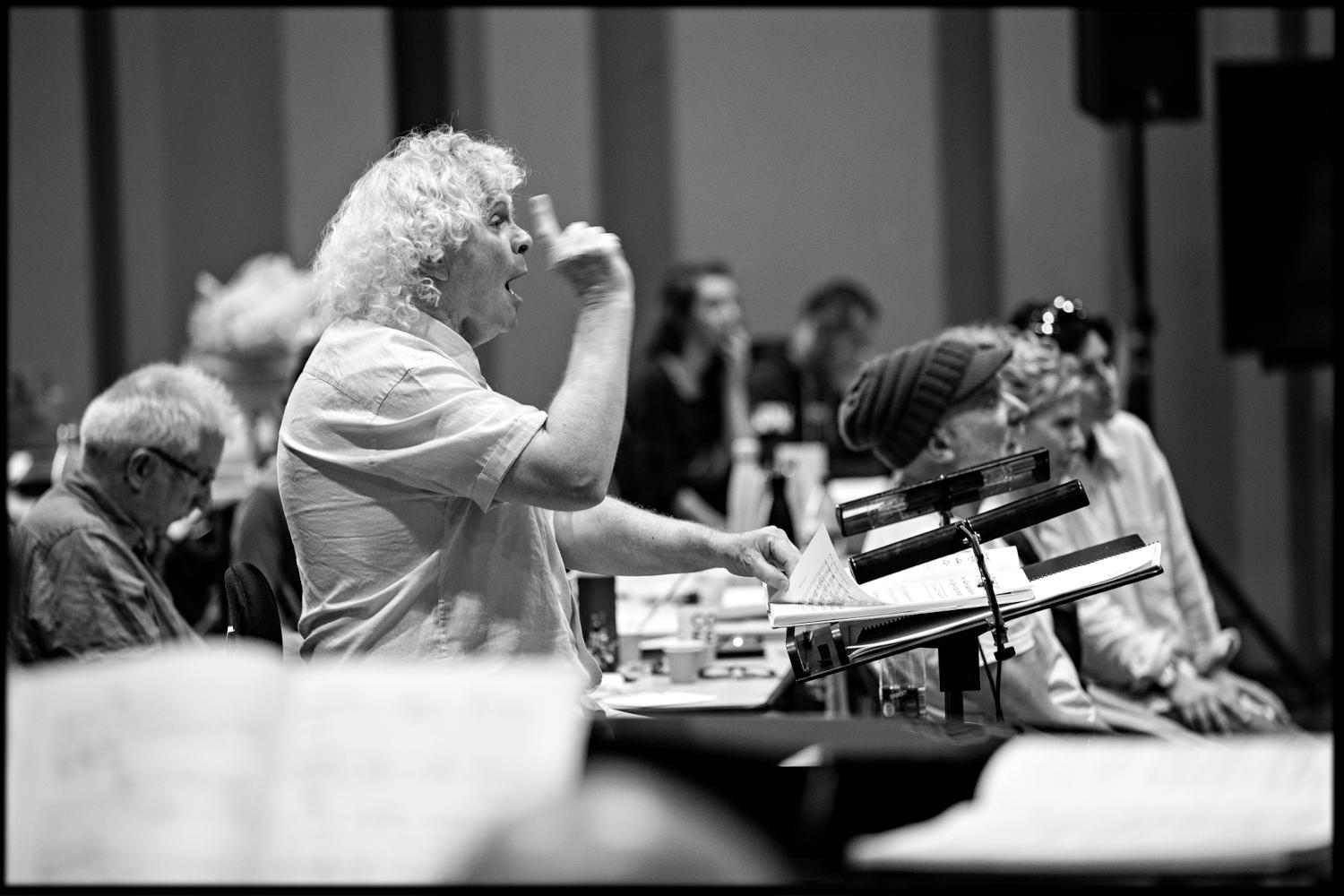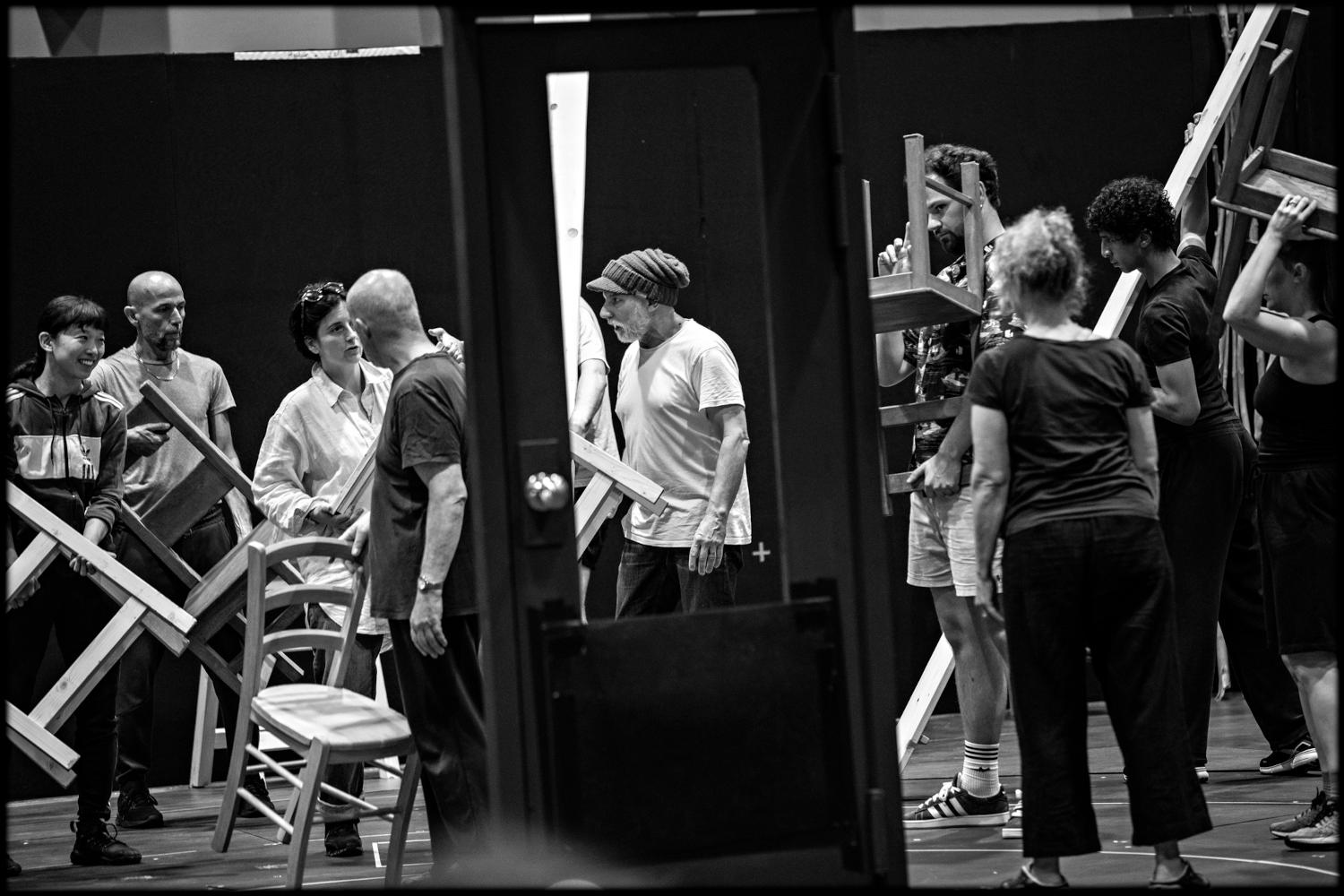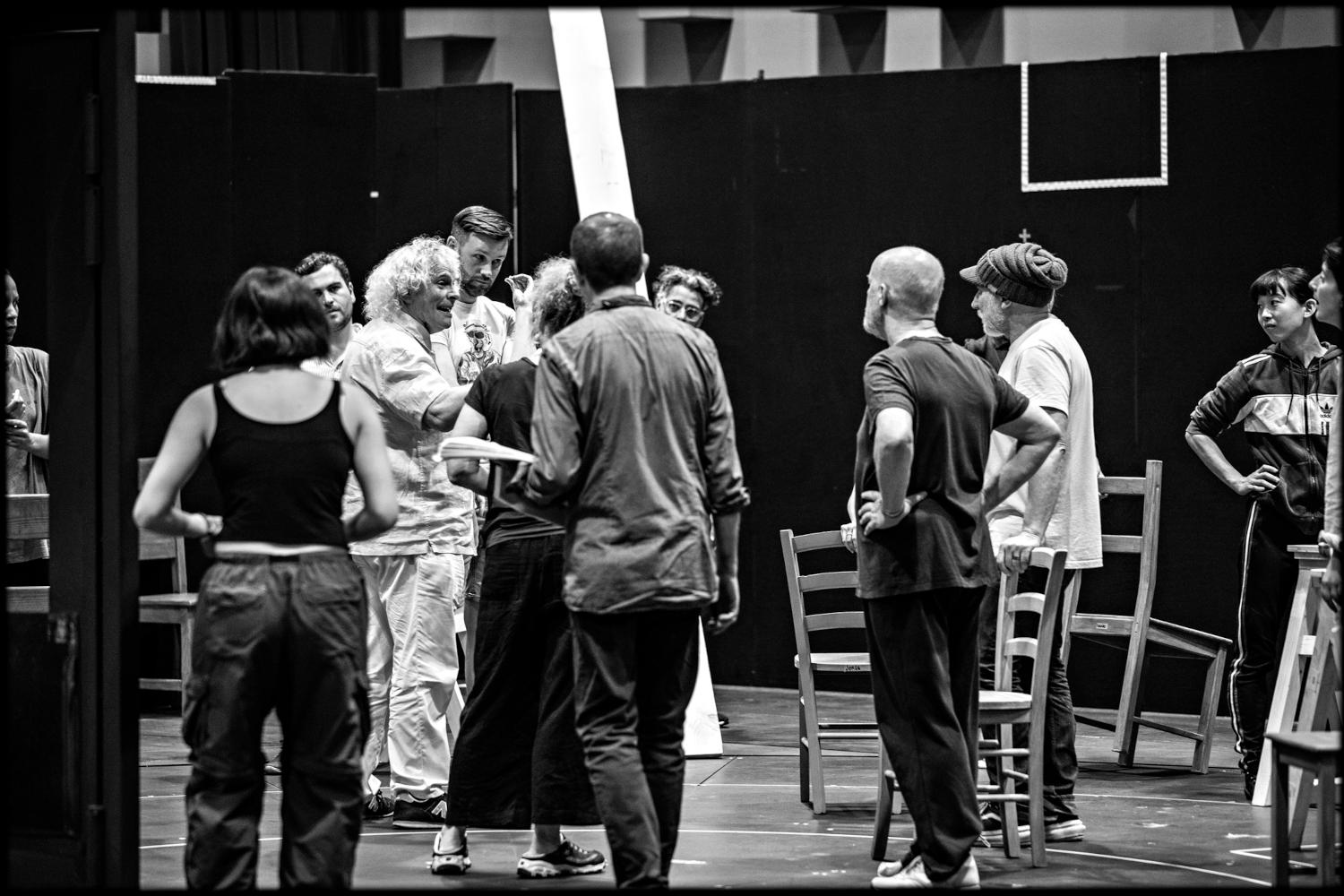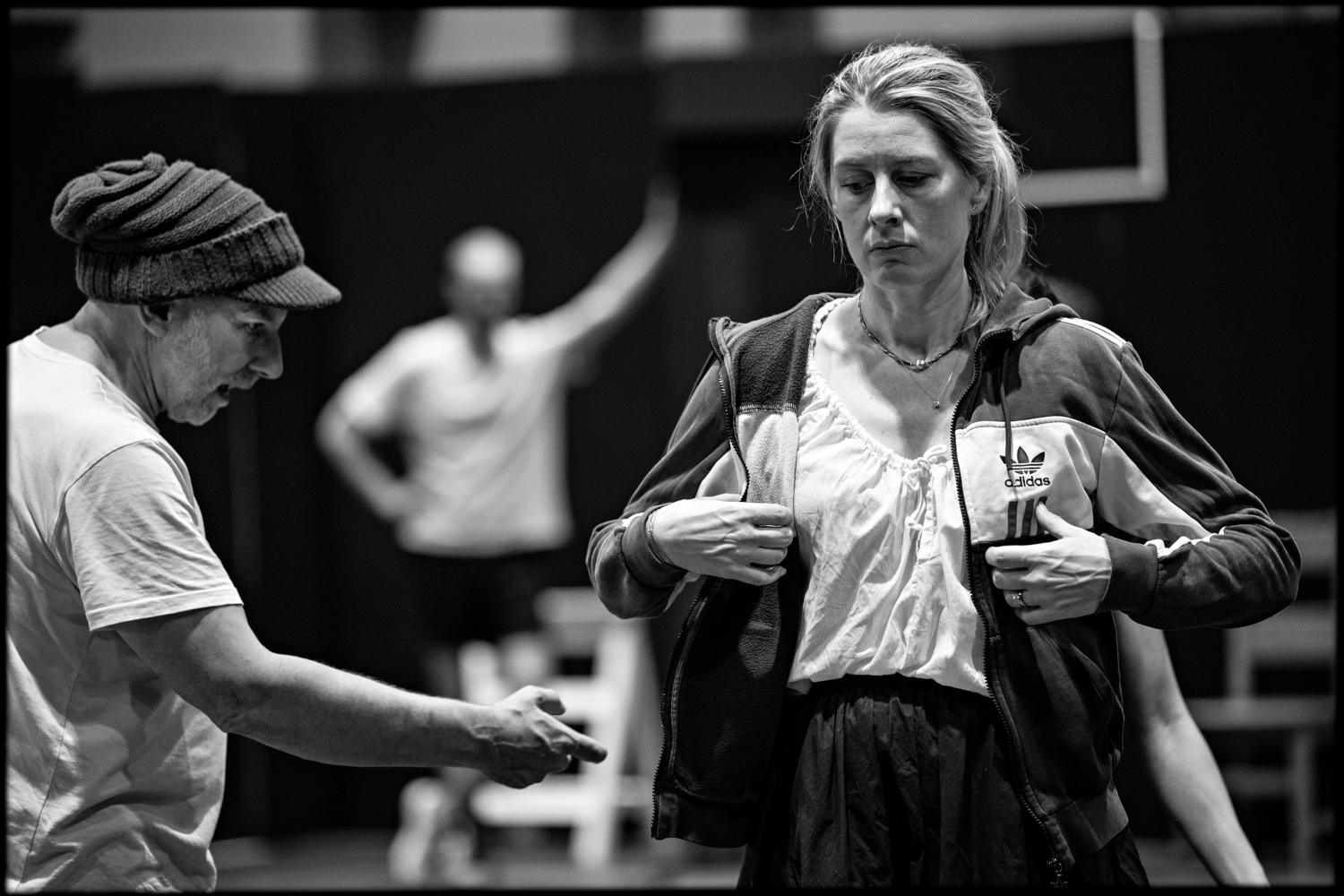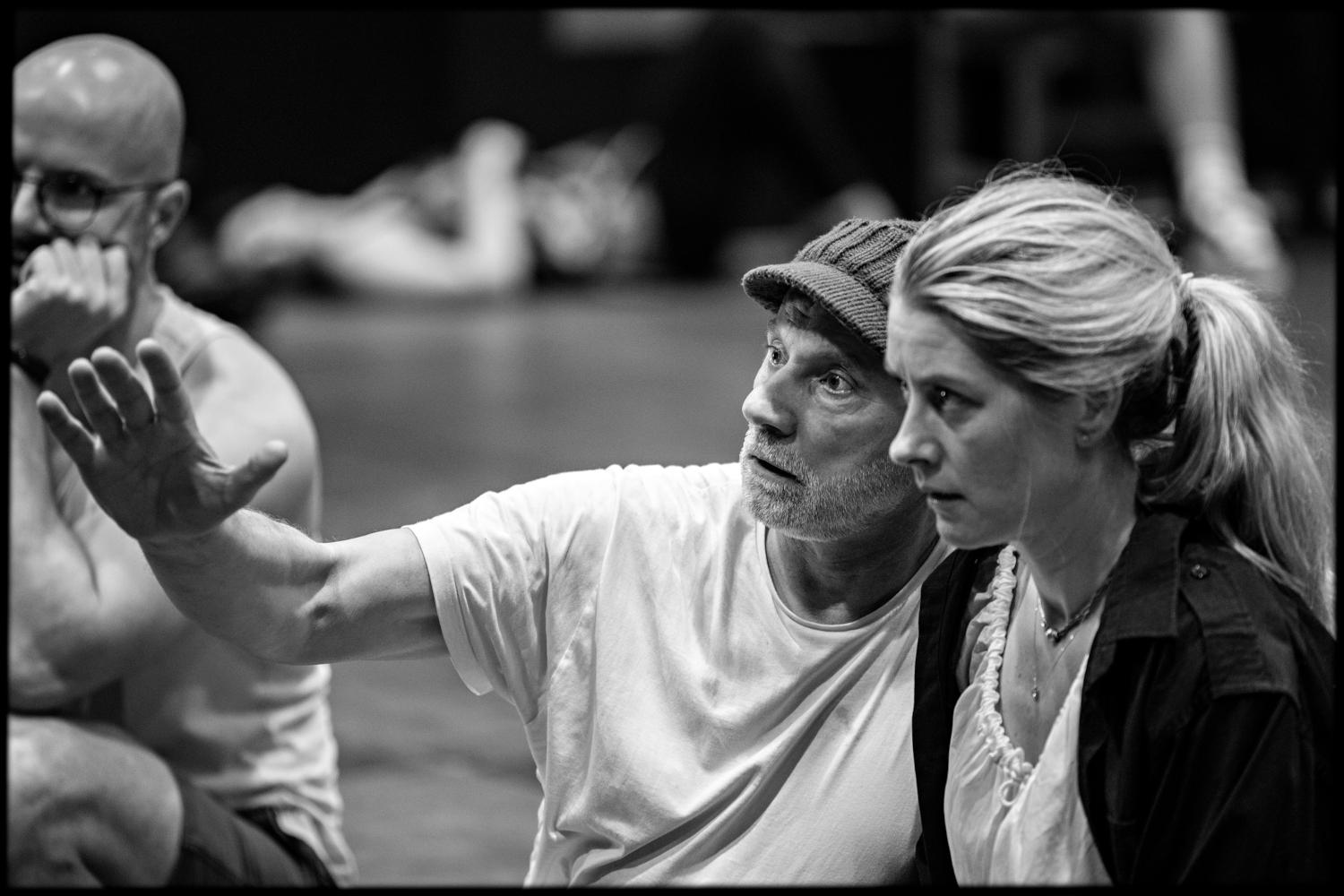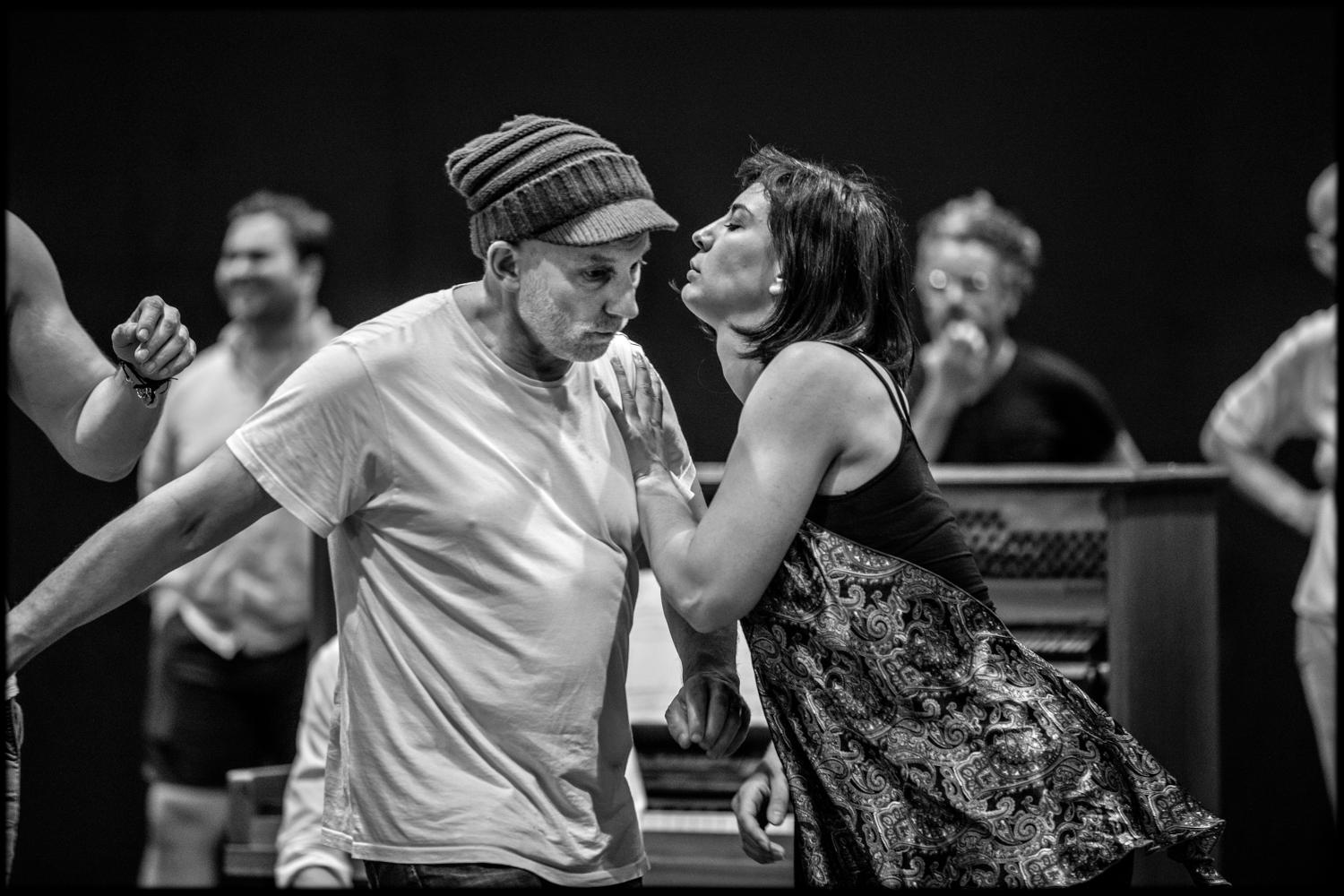[ REHEARSAL NOTEBOOK ] WOZZECK
Share
Friday 16 June 2023 — Grand Théâtre de Provence — Festival d'Aix-en-Provence
On Friday afternoon, the teams at the Grand Théâtre de Provence welcomed the numerous artists of the Estonian Philharmonic Chamber Choir for a very intensive rehearsal based on the crowd scenes in Alban Berg's Wozzeck. The performers quickly felt at ease: they took over the stage, positioned themselves in the many elements of the set and prepared to go back over the movements created with choreographer Leah Hausman.
The opera tells the harrowing story of the soldier Wozzeck, who is rejected, mistreated and abused by the various characters he comes into contact with during the course of the narrative: the aim is to convey in the best possible way the confrontation between a lonely, desperate man, played by Christian Gerhaher, and a society that is united against him. On the schedule for this work session were scenes 4 and 5 from Act II: in these scenes, Wozzeck, furious at the potential infidelities of his partner Marie, sees her dancing on the arm of another man, the Tambourmajor, who then violently humiliates the offended soldier, thus intensifying his distress.
The stage, the orchestra pit and the orchestra stalls are occupied by the various professions, all hard at work. At centre stage, in the audience seating, the stage management team discuss the lighting settings that will be required; the raised orchestra pit, a few metres from the stage, is occupied by the grand piano - the only musical support at this stage of the rehearsals - and the music stands of the conductor, Sir Simon Rattle, and members of the artistic team. This proximity makes it possible to work on the details and maintain a constant dialogue with the stage: the staging and interpretation of all involved are still adaptable.
The rehearsal must allow the artists on stage to get to grips with the stage and its technical constraints: in addition to the entrances and exits, which must be known and used with fluidity both stage right and stage left, the aim is not to trip over the huge central stage, which turns on itself. The technical teams ensure that every time this stage is set in motion, what is known in the theatre as "la tournette"(turntable stage): part of the floor begins to turn, like a conveyor belt, taking along with it the artists occupying that part of the set. You have to keep your balance, not suffer from vertigo and, above all, continue playing or singing. A number of exercises will have already been tried out in previous sessions: walking while the turntable moves faster and faster, while it moves in the opposite direction to the performers, jumping onto the turntable while it is moving, etc. All these exercises are designed to ensure that technical considerations do not take precedence over the music during the performances, and that the singing takes centre stage. After several attempts, the difficulty seems to have been overcome and no longer poses a problem: bring on the music!
All the professions work together: the Grand Théâtre de Provence is constantly crisscrossed by a host of technicians, prop-makers and flymen (the machinists responsible for moving the curtains, sets and lighting equipment) who communicate with each other using intercom systems - walkie-talkies that enable people working on a set to communicate effectively before, during and after a performance.
Alongside the stage management tables, the production assistant ensures that the rehearsals run smoothly: it is she who checks that the artists are working in the best possible conditions. Today, she has been given responsibility for the children on the set, as several scenes in Wozzeck call for them to be involved: she has to keep an eye on their timetable, respect the scheduling requirements defined before the rehearsals, and ensure that they are well integrated into the team. The role of the production department is essential in this respect: as Wozzeck's production assistant explained to us, the challenge is to "facilitate the encounter between the newcomers and the stage director's imagination".
Suddenly, the crowd takes over the stage: the rehearsal is beginning. The lights slowly fade in the auditorium, as the noise of voices starts to die down; Simon McBurney, surrounded by his assistants, finishes giving the last indications intended to guide the interpretation of the scene being worked on that day, and to ensure that the sequences run smoothly. The scene begins but is quickly interrupted: the stage director leaps effortlessly onto the stage, joins the chorus and goes back over with them the positions they have just adopted. To further personify his ideas, he sings extracts from the score into the microphone, miming the movements that accompany them. The choreographer, Leah Hausman, moves continuously between the chorus members to suggest alternative gestures or correct some of the positions they have chosen. Punctuated by frequent interruptions, rehearsal requires great patience from everyone: every modification is likely to have repercussions on several levels of the production. It underlines the extent to which the creative process is based on constant dialogue and constant development.
Alongside the stage team, Sir Simon Rattle had been waiting for the final technical instructions before restarting the rehearsal. He is confronting the chorus tutti with infectious enthusiasm, giving the tempo before each entrance of the group, and speaking aloud over the music to give clarifications as the voices come in. With the orchestra not yet in place, a pianist takes over the work, and this configuration allows the conductor to develop a relationship of great trust with the performers: an essential stage in the smooth running of the production before the arrival of the full orchestra.
Aurore Flamion and Raphaëlle Blin
Dramaturges of the Festival d'Aix-en-Provence
Translation: Christopher Bayton
FURTHER INFORMATION ABOUT WOZZECK


